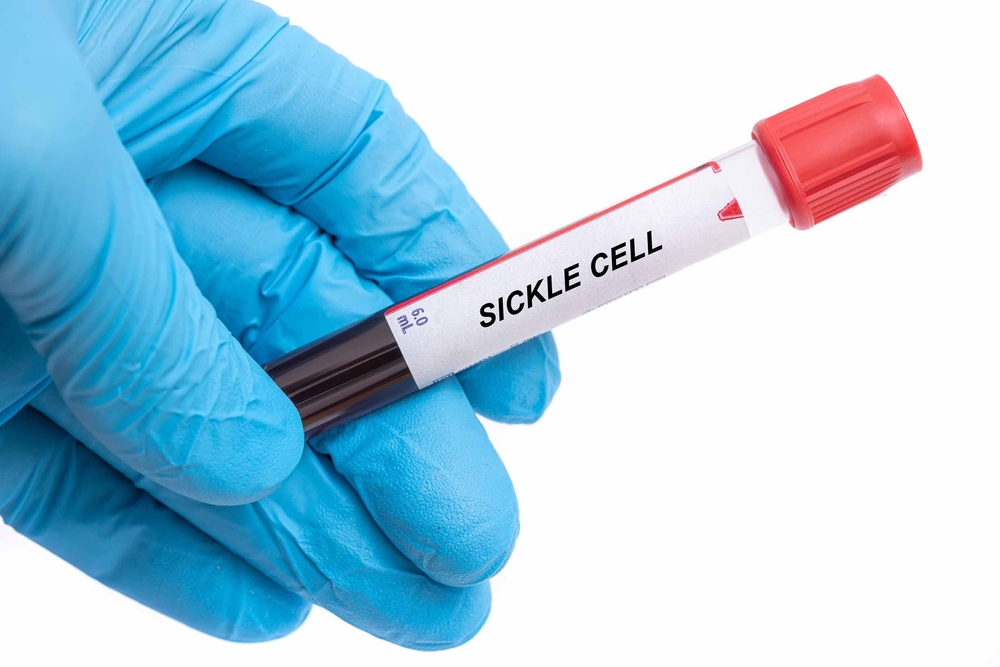You might have wondered why some people with sickle cell disease seem to live relatively normal lives while others spend half their time in the hospital writhing in agony from pain crises. It’s the same genetic condition, the same fundamental problem with their hemoglobin, yet their experiences couldn’t be more different. One person might have monthly trips to the emergency room for unbearable pain, while another with the exact same diagnosis rarely has symptoms that interfere with their daily life.
The answer to this medical mystery isn’t about different treatments, better doctors, or lifestyle choices. It’s about a fascinating genetic quirk that allows some people to keep producing the special type of hemoglobin they had as babies, long after their bodies were supposed to switch over to making adult hemoglobin exclusively. This seemingly simple difference can transform sickle cell disease from a life-destroying condition into something manageable.
Understanding this natural protection mechanism is revolutionizing how doctors think about treating sickle cell disease and opening up incredible possibilities for giving everyone the same genetic advantages that some lucky people are born with. It’s like discovering that some people have a built-in shield against their own condition, and now scientists are trying to figure out how to give that same shield to everyone who needs it.
Your baby hemoglobin was actually a superhero protein
When you were developing in your mother’s womb, your body produced a completely different type of hemoglobin called fetal hemoglobin that was perfectly designed for your unique situation as a developing baby. This fetal hemoglobin had special properties that made it incredibly efficient at grabbing oxygen from your mother’s blood through the placenta and delivering it to your developing tissues.
The crucial difference is that fetal hemoglobin doesn’t participate in the sickling process that causes all the devastating problems in sickle cell disease. While adult hemoglobin with the sickle cell mutation clumps together like traffic jams and distorts red blood cells into those characteristic crescent shapes, fetal hemoglobin stays flexible and keeps red blood cells round, smooth, and healthy.
Normally, your body makes a complete switch from fetal to adult hemoglobin production during your first year of life, which explains why babies with sickle cell disease usually don’t show symptoms until they’re several months old. But some incredibly fortunate people have genetic variations that allow them to keep making substantial amounts of fetal hemoglobin throughout their entire lives, essentially keeping their baby superpower forever.
The genetic lottery creates natural protection
Hereditary persistence of fetal hemoglobin is exactly what it sounds like – instead of completely shutting down fetal hemoglobin production after birth like most people do, some individuals continue cranking out significant amounts of this protective protein throughout their lives. This happens because they won a specific genetic lottery that affects the normal shutdown mechanisms for fetal hemoglobin production.
The amount of fetal hemoglobin that people with this trait produce varies dramatically from person to person. Some lucky individuals might have 5 to 10 percent fetal hemoglobin mixed in with their adult hemoglobin, while the genetic jackpot winners might have 20 percent or even higher levels coursing through their veins. Generally speaking, the more fetal hemoglobin someone produces naturally, the more protection they have against sickle cell complications.
This protective trait shows up in different populations around the world, but it’s particularly common in certain regions of Africa, the Middle East, and India where sickle cell disease is also prevalent. This geographic overlap isn’t just a coincidence – the same environmental pressures that led to the persistence of sickle cell trait in these populations also favored genetic variations that could reduce the harmful effects of having sickle cell disease.
High fetal hemoglobin transforms the disease experience
People with sickle cell disease who also happen to produce high levels of fetal hemoglobin typically experience a completely different version of their condition compared to those who produce only adult hemoglobin. They have dramatically fewer pain crises, less organ damage over time, fewer emergency room visits and hospitalizations, and generally enjoy much better quality of life throughout their entire lifespan.
The fetal hemoglobin essentially acts like a protective dilution agent for the problematic sickle hemoglobin in their red blood cells. When a significant percentage of the hemoglobin in each red blood cell is the beneficial fetal type, there’s simply less sickle hemoglobin available to clump together and cause the cellular distortion that leads to all the complications. This means their red blood cells stay more flexible and are much less likely to get jammed in small blood vessels like corks in wine bottles.
Some extraordinarily lucky people with sickle cell disease and naturally high fetal hemoglobin levels have such mild symptoms that they might not even realize they have the condition until they’re tested as adults for other reasons. Others might experience occasional mild symptoms but nothing remotely resembling the severe, life-altering complications that typically define the sickle cell experience for most people.
Multiple genes orchestrate this protection
The genetic factors controlling fetal hemoglobin production involve a complex symphony of multiple genes working together in intricate ways. Some people have variations in the genes that normally slam the brakes on fetal hemoglobin production after birth, while others have variations that affect the volume control for how much fetal hemoglobin gets manufactured in the first place.
The most extensively studied genetic variations affect regions scientists call the beta globin locus and various regulatory sequences that act like molecular switches controlling hemoglobin production. These genetic differences can be inherited from one parent, both parents, or arise as new mutations, and different combinations create dramatically different levels of fetal hemoglobin persistence throughout life.
Some genetic variations that cause high fetal hemoglobin levels are found almost exclusively in specific populations or geographic regions, reflecting the evolutionary history of these protective mutations. Understanding these different genetic mechanisms is helping researchers develop sophisticated new approaches to artificially boost fetal hemoglobin production in people who weren’t born with this natural advantage.
Scientists are learning to mimic nature’s solution
The revolutionary discovery that fetal hemoglobin provides natural protection against sickle cell disease has completely transformed how researchers approach treating this condition. Instead of just managing symptoms and trying to prevent complications after they occur, scientists are now working intensively on ways to reactivate fetal hemoglobin production in people whose bodies normally don’t produce high levels.
Several medications have already been developed that can increase fetal hemoglobin levels in some people with sickle cell disease. Hydroxyurea, one of the most commonly prescribed treatments for sickle cell disease, works partly by boosting fetal hemoglobin production, though it also has other beneficial effects that help protect against complications.
Newer experimental treatments are specifically designed to flip back on the genetic switches that control fetal hemoglobin production. These cutting-edge approaches use various sophisticated methods to reactivate the same genes that were highly active during fetal development but normally get permanently shut down after birth.
Gene therapy approaches target the root cause
Some of the most promising experimental treatments for sickle cell disease involve using advanced gene therapy techniques to dramatically increase fetal hemoglobin production in people who don’t naturally produce high levels. These approaches either add completely new genes that promote fetal hemoglobin production or modify existing genes to remove the normal restrictions on fetal hemoglobin synthesis.
One particularly elegant approach involves editing the specific genes that normally suppress fetal hemoglobin production after birth, essentially removing the genetic brakes that ordinarily shut down fetal hemoglobin synthesis permanently. Another strategy involves introducing additional copies of genes that actively promote fetal hemoglobin production, essentially giving people extra genetic machinery to manufacture this protective protein.
These gene therapy approaches are still experimental and involve significant technical challenges and potential risks, but early results from clinical trials are genuinely exciting. Some patients have achieved remarkable increases in fetal hemoglobin levels and experienced corresponding dramatic improvements in their sickle cell symptoms, essentially gaining the genetic protection they weren’t born with.
Treatment responses vary based on genetic background
While increasing fetal hemoglobin levels can produce life-changing improvements in sickle cell disease symptoms, not everyone responds equally well to treatments designed to boost fetal hemoglobin production. Some people achieve significant and sustained increases in fetal hemoglobin levels with treatment, while others show disappointingly little response to the same interventions despite following protocols perfectly.
The dramatic variability in treatment response appears to be directly related to the same genetic factors that control natural fetal hemoglobin production. People who have genetic variations that make them naturally efficient at producing fetal hemoglobin tend to respond much better to treatments that attempt to artificially increase fetal hemoglobin levels.
This genetic reality means that testing to identify someone’s natural genetic capacity for fetal hemoglobin production is likely to become a crucial part of treatment planning for sickle cell disease. Understanding each person’s unique genetic background could help doctors choose the most effective treatments and accurately predict who is most likely to benefit from specific therapeutic approaches.
The future points toward personalized genetic medicine
As scientific understanding of the genetics behind fetal hemoglobin production and sickle cell disease continues advancing rapidly, treatment approaches are evolving toward much more personalized and precisely targeted interventions. Instead of using identical treatments for everyone with sickle cell disease, doctors will eventually tailor therapeutic strategies based on each person’s individual genetic capacity for fetal hemoglobin production.
This personalized approach could involve comprehensive genetic testing to identify the specific variations that affect fetal hemoglobin production in each patient, followed by customized treatment plans designed to work optimally with each person’s unique genetic background. Some people might benefit most from medications that boost fetal hemoglobin production, while others might need completely different approaches that target alternative protective pathways their genetics make more accessible.












